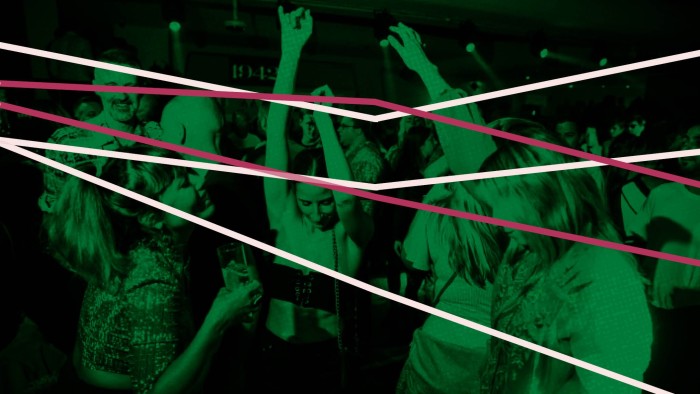Stay informed with free updates
Simply sign up to the Travel & leisure industry myFT Digest — delivered directly to your inbox.
New Year’s Eve revellers welcoming 2025 at a 35-hour-long event will be the last to grace the dance floor at the Watergate club, an iconic Berlin venue that has become the latest victim of clubsterben — club death.
“The days when Berlin was flooded with club-loving visitors are over,” the venue’s management said in a farewell statement. Watergate’s co-owner blamed cost pressures, declining tourism, waning enthusiasm from Generation Z and the rise of music festivals for its closure.
The pressures that led to Watergate’s demise are behind a trend transforming nightlife capitals from Berlin to Barcelona and Melbourne to New York: despite the soaring popularity of dance music, clubbers are ending their nights earlier.
The proportion of club nights running beyond 3am fell in 12 of 15 global cities between 2014 and 2024, according to a Financial Times analysis of events on listings website Resident Advisor.
“People can only go out for so many hours,” said Lutz Leichsenring, co-founder of international night-time consultancy VibeLab. “There’s a lot of competition between night-time and daytime events.”
Leichsenring said venue owners were often closing their doors earlier to save on costs, as revenue from drink sales tended to drop off in the early morning hours.
More restrictive licensing rules after Covid-19 have also become an issue for clubs and promoters in cities across the globe. While cities have appointed night mayors and adopted “24-hour city” policies in recent years, the added oversight on the night-time economy since the pandemic has resulted in stricter policing of late-night establishments, Leichsenring added.
The increased popularity of daytime events and festivals is another factor. Mike Vosters, whose company Matinee Social Club organises early evening parties in New York, said that while the 5-10pm events were originally intended for millennials who no longer wanted to party into the small hours, they had received “a tonne of interest” from partygoers in their 20s.
According to Vosters, the shift away from “bottle service” club culture and a new cross-generational emphasis on healthy living have been two of the main drivers behind the surge of enthusiasm for dance parties that end early.
Resident Advisor data reflected the rise in daytime parties, with several big cities showing a surge in events that end at 10pm.
Melbourne lays claim to being the live music capital of the world and 20 years ago boasted a vibrant nightclub scene. Yet the sector has been in sharp decline in the city as consumer habits changed and the cost of running events rose, particularly after the pandemic.
One executive in the entertainment industry said younger people were less inclined to go out raving until 6am as they are more health conscious and less frivolous with money than previous generations. This is reflected in Melbourne’s nightclub closures — with more than 100 shutting down in recent years — and fewer clubs staying open all night.
In Dublin, campaigners are fighting to change restrictive licensing laws that require clubs to pay €410 a night to stay open between 12.30am and 2.30am.
Sunil Sharpe, a DJ and co-founder of Give Us the Night, said the stalling of a proposed law that would extend closing times to 6am has left the industry in limbo, with operators nervous to invest in new venues.
He estimates there are about 20 to 25 clubs left in the city and its suburbs, which are home to 1.3mn people. “It’s prohibitively expensive to open a venue now . . . or to even open your doors for an individual night,” he added.
But there are signs of hope for dance music. A study released by the International Music Summit, an annual conference held in Ibiza, found that the electronic music industry had grown by 17 per cent in 2023, reaching an annual revenue of $11.8bn.
Across the 15 cities analysed by the FT using Resident Advisor event data, venues listing more than five events increased by 60 per cent in 2024 compared with a decade ago. More than 35,000 artists had been booked to play in those cities since 2014 — up 90 per cent over the same period.
“People are still craving community. People still want to go out,” said Vosters. “That hasn’t been diminished and music is still the best way to do that.”
Read the full article here

